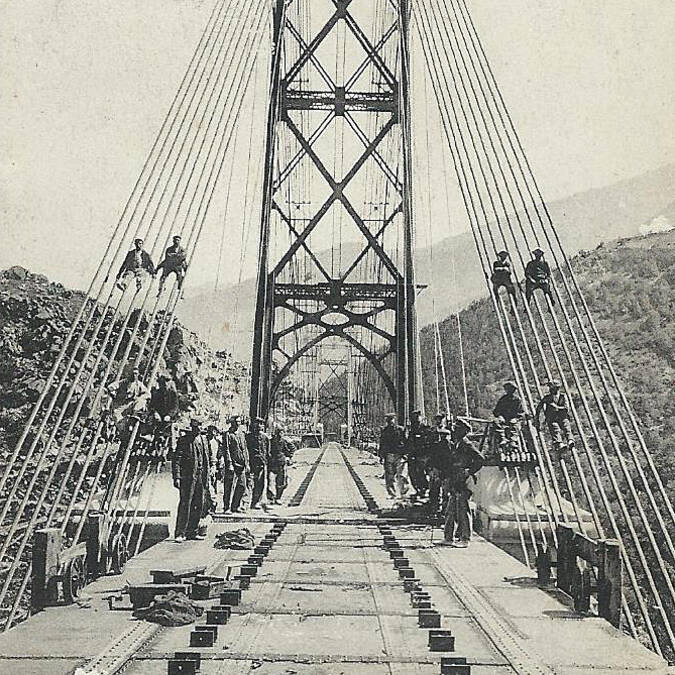In the early twentieth century, the railway line carrying the famous Yellow Train (Train Jaune) was built to link the high Catalan plateaux to the rest of the region. Work began in 1903 and by 1910 connected Villefranche-de-Conflent to Mont-Louis. The final stretch was completed in 1927 reaching Latour-de-Carol.
Today it follows its original route through an environment of magnificent mountain scenery. Laying the track required the construction of 650 engineering masterpieces, including nineteen tunnels and two remarkable bridges, the Séjourné Viaduct (suspended 65 metres above the ground) and the Pont Gisclard (80 metres above a precipice), allowing the Yellow Train to chug along the contours of the mountains.
The line runs all year round, serving 22 different stations. During the summer season, the Yellow Train has open wagons for a real mountain experience - you'll embark on a fascinating journey through the Pyrenees. From one station to the next, there's an entire heritage to discover (Text CDT Pyrénées-Orientales).
The track passes through nineteen tunnels (including one tunnel 337 metres long at Planes, and the Pla de Llaura tunnel near Ur, 380m long) as well as passing over numerous bridges.
Discover its itinerary and get on board now!
Of the 650 structures built for the route, two are particularly noteworthy: the Pont Gisclard bridge and the Sejourné Viaduct.
Built between 1905 and 1909, the Pont de Gisclard was the first metal railway bridge in France. It is unsurprisingly, therefore, classified as a historical monument. It was designed and developed by Albert Gisclard, head of the National Order of Engineers. It crosses the river Tet at a height of eighty metres.
The Sejourné Viaduct spans both the river Tet and the N116 main road. Designed by Paul Séjourné, of the national Roads and Bridges Department, it was started in 1906 and finished in 1908. Both bridges are displays of true technical prowess.
The bridge's centenary was celebrated on July 26 and 27, 2013
The Train Jaune, a technical marvel
The train runs on an electric drive system. Electricity is provided by a third rail which runs alongside the track.
The Bouillouses dam and hydroelectric plant at La Cassagne, between Fontpedrouse and Mont-Louis, were built and commissioned in 1910 to provide electricity to the Train Jaune. The production complex at La Cassagne is operated by the Hydroelectric Company of Southern France, a subsidiary of the French National Railways, created in 1937. It is today part of the Electrabel group, owned by Suez.
The complex includes nine power plants, seven of which are located on the river Tet. Water from the valleys is routed to the production sites by large pipes which can be seen from the train itself. Surplus energy produced is sold to EDF.
Several books exist on the history of the Train Jaune, on sale in bookshops and newsagents around the area.






